Picture of where your lymph nodes are located. Comprehensive Guide to Axillary Lymph Nodes: Anatomy, Function, and Clinical Significance
What are the groups of axillary lymph nodes? How do the axillary lymph nodes function in the body? What is the clinical significance of the axillary lymph nodes?.
Anatomy of Axillary Lymph Nodes
The axillary lymph nodes are located in the axillary (armpit) region, between the upper thoracic wall and the arm. They are organized into five distinct groups based on their anatomical relationships:
Anterior (Pectoral) Lymph Nodes
These lymph nodes are situated along the inferior border of the pectoralis minor muscle, near the lateral thoracic vessels. They receive lymph drainage from the breast, skin, and muscles of the supraumbilical anterolateral body wall, and then drain into the central and apical lymph nodes.
Posterior (Subscapular) Lymph Nodes
The posterior lymph nodes are located on the posterior wall of the axilla, along the inferior border of the subscapularis muscle. They receive lymph from the scapular region and posterior thoracic wall, and drain into the central and apical lymph nodes.

Lateral (Humeral) Lymph Nodes
The lateral lymph nodes are situated over the lateral wall of the axilla. They receive lymph from the arm and drain into the central, apical, and deep cervical lymph nodes.
Central Lymph Nodes
The central lymph nodes appear at the base of the axilla. They receive lymph from the anterior, posterior, and lateral lymph node groups, and then drain to the apical lymph nodes.
Apical (Terminal) Lymph Nodes
The apical lymph nodes are located deep in the apex of the axilla. They receive lymph from all the other lymph node groups, as well as the upper breast. The efferent vessels from the apical group converge to form the subclavian lymphatic trunk, which drains into the thoracic duct on the left and the right lymphatic duct on the right.
Function of Axillary Lymph Nodes
The primary function of the axillary lymph nodes, like the rest of the lymphatic system, is to defend against foreign particles, provide immunity against microorganisms, and return excess interstitial fluid back to the systemic circulation. Lymph enters the lymph node through the afferent lymphatic vessel and flows through a series of sinuses within the node, including the subcapsular sinus, cortical sinuses, and medullary sinuses, before exiting via the efferent lymphatic vessel.
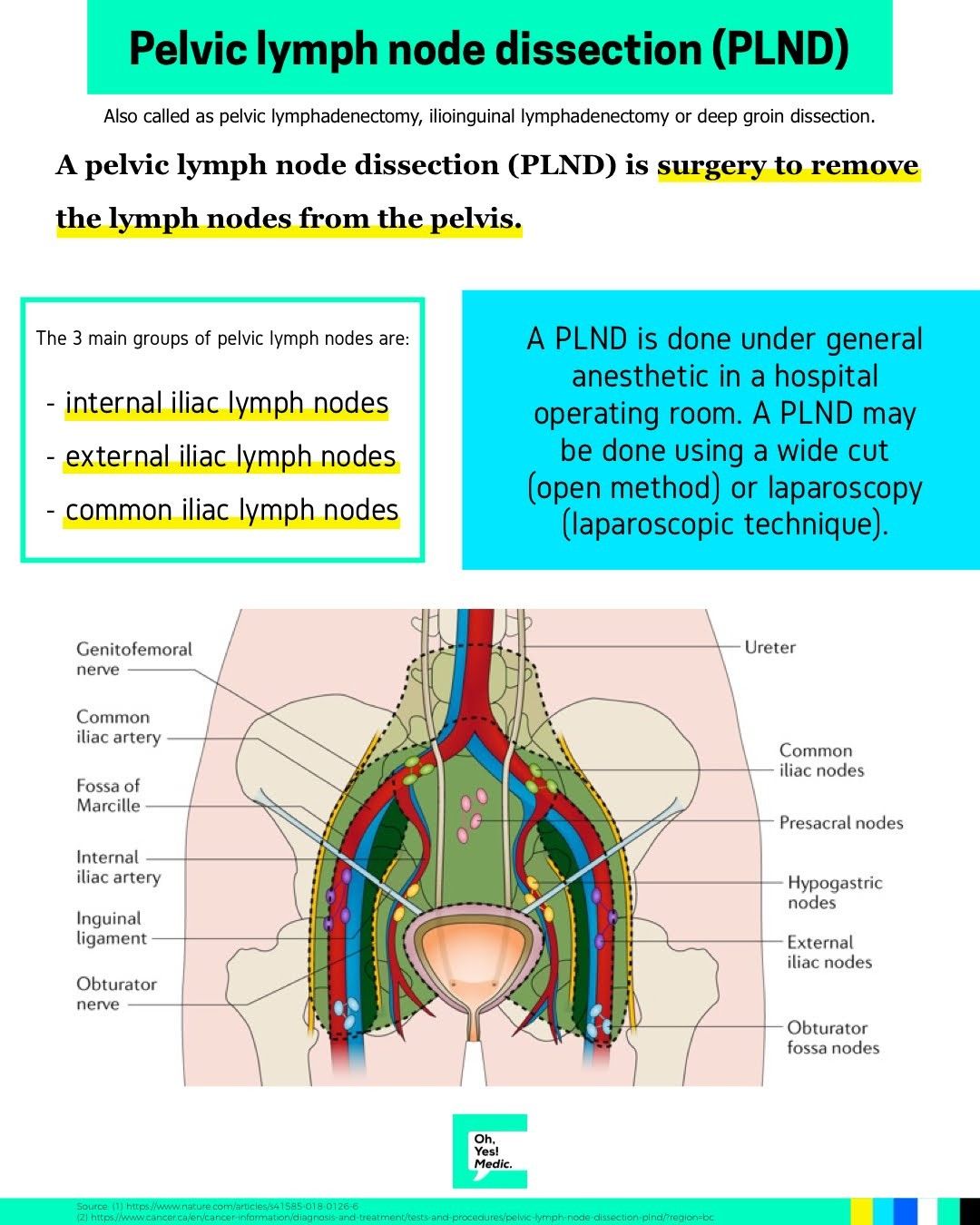
Structurally, a lymph node consists of three basic compartments: the cortex, paracortex, and medulla. These areas contain specialized cells, such as B lymphocytes, T lymphocytes, dendritic cells, macrophages, and plasma cells, which play crucial roles in the immune response.
Clinical Significance of Axillary Lymph Nodes
The axillary lymph nodes are of particular clinical significance for several reasons:
Breast Cancer Metastasis
The axillary lymph nodes are often the first site of breast cancer metastasis. Axillary node involvement is the single most significant prognostic variable for breast cancer patients, as it can indicate the presence of distant metastases.
Hematological Malignancies
Axillary lymphadenopathy (enlargement of the lymph nodes) can be associated with various hematological malignancies, such as lymphoma and leukemia.
Infection and Autoimmune Conditions
Axillary lymphadenopathy can also be a result of infection, such as viral or bacterial infections, or various autoimmune etiologies.

Embryology of Axillary Lymph Nodes
The axillary lymph nodes, like other components of the lymphatic system, develop from hemangioblastic stem cells. There is a close relationship between the lymphatic and vascular systems in early development, with lymphatic sacs arising from primitive veins around the 5th week of gestation in humans. By the end of the embryonic period, six primary lymph sacs have formed, which will eventually develop into the mature lymphatic system.
Surgical Considerations
The axillary lymph nodes are of great importance in the surgical management of breast cancer. Axillary lymph node dissection (ALND) is a common surgical procedure performed to stage and treat breast cancer, as it can provide information about the extent of disease and guide further treatment decisions.
Additionally, the axillary lymph nodes are often targeted in radiation therapy for breast cancer, as they are a common site of metastatic spread.
Conclusion
In summary, the axillary lymph nodes are a critical component of the lymphatic system, playing a vital role in immune function and serving as an important clinical marker in various disease processes, particularly breast cancer. Understanding the anatomy, function, and clinical significance of the axillary lymph nodes is essential for healthcare professionals involved in the diagnosis and management of various conditions.
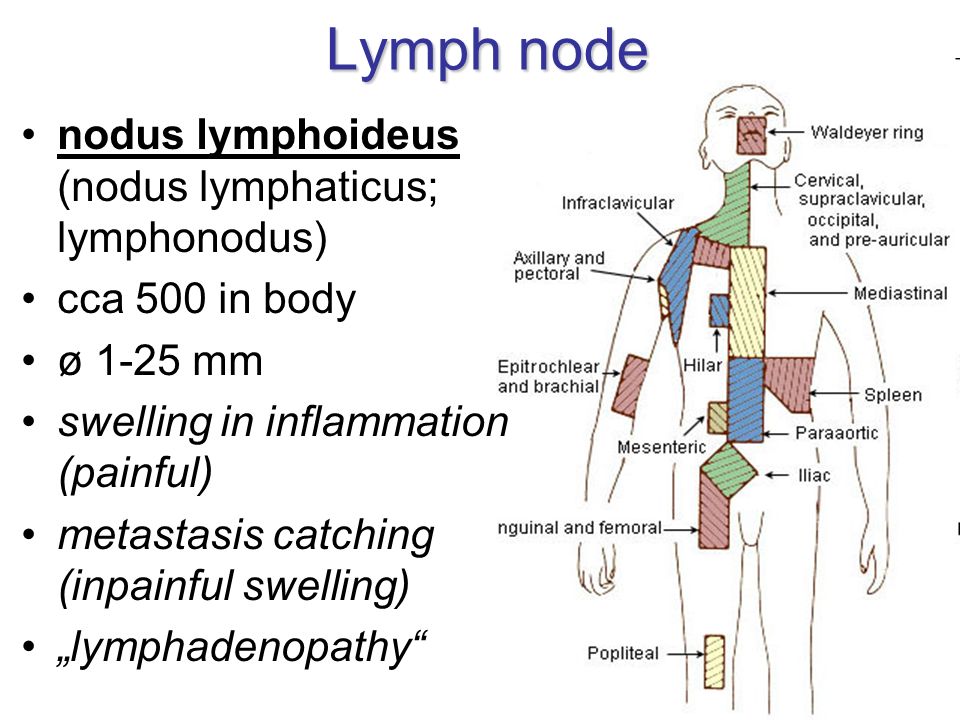
Anatomy, Shoulder and Upper Limb, Axillary Lymph Nodes – StatPearls
Introduction
The axilla is a small anatomical space located between the upper thoracic wall and the arm. The main contents include the brachial plexus, axillary artery and vein, and axillary lymph nodes.[1] Lymph nodes contain a range of immune cells, including lymphocytes and macrophages. These remove damaged cells, foreign material, and microorganisms from the lymphatic fluid before returning it to the venous circulation.[2] The axillary lymph nodes arrange into five groups based on their anatomical relations. Collectively, they drain the wall of the thorax, breast, arm, and upper abdominal wall above the umbilicus. The axillary lymph nodes are of particular clinical significance as they are often the first site of breast cancer metastasis.[3] Axillary node involvement is the single most significant prognostic variable for breast cancer patients.[4] Axillary lymphadenopathy is also associated with hematological malignancies, infection, and various autoimmune etiologies. [5] It is, therefore, crucial to have a thorough understanding of this region.
[5] It is, therefore, crucial to have a thorough understanding of this region.
In this article, we will focus primarily on the axillary lymph nodes respective to their anatomical features, relations, drainage, surgical considerations, and clinical significance.
Structure and Function
The axillary lymph nodes reside in the axillary pad of fat and fall into five groups.[3] Every group of lymph nodes receives lymph from a specified, nearby region.
Anterior (pectoral) lymph nodes are along the inferior border of pectoralis minor, near the lateral thoracic vessels. They receive lymph from the breast, skin, and muscles of the supraumbilical anterolateral body wall. They drain into the central and apical nodes.
Posterior (subscapular) lymph nodes are located on the posterior wall of the axilla along the inferior border of the subscapularis. They receive lymph from the scapular region, as well as the posterior thoracic wall. They drain into the central and apical nodes.

Lateral (humeral) lymph nodes are over the lateral wall of the axilla. They receive lymph from the arm and drain into the central, apical, and deep cervical nodes.
Central lymph nodes appear in the base of the axilla. They receive lymph from the anterior, posterior, and lateral groups, and drain to the apical lymph nodes.
Apical (terminal) lymph nodes are located deep in the apex of the axilla. They receive lymph from all of the groups mentioned above, in addition to the upper breast. The efferent vessels from the apical group converge to form the subclavian lymphatic trunk. On the left, this drains directly drains into the thoracic duct, and on the right, the subclavian trunk drains into the right venous angle via the right lymphatic duct.[6]
The function of the axillary lymph nodes, like that of the rest of the lymphatic system, is to defend against foreign particles, provide immunity against microorganisms, and return excess interstitial fluid back to the systemic circulation.:max_bytes(150000):strip_icc()/swollen-glands-and-lymphadenopathy-26343681-5c87d173c9e77c0001422fc6.png) [2] Lymph enters the lymph node through the afferent lymphatic vessel and subsequently flows through a system of sinuses within the node. The series of sinuses begin with the subcapsular sinus and continues to the cortical sinuses and finally, the medullary sinuses. Lymph then exits the node via the efferent lymphatic vessel.
[2] Lymph enters the lymph node through the afferent lymphatic vessel and subsequently flows through a system of sinuses within the node. The series of sinuses begin with the subcapsular sinus and continues to the cortical sinuses and finally, the medullary sinuses. Lymph then exits the node via the efferent lymphatic vessel.
Structurally a lymph node consists of three basic compartments; a cortex, paracortex, and medulla.[7] There are many types of specialized cells within the lymph node concentrated in these areas.[7] The B cell lymphocytes are classically found in the outer cortex and may form lymphoid follicles, while T cells and dendritic cells are classically present in the paracortex. The medulla contains macrophages, plasma cells, and B cells. Activation of a lymph node leads to the development of germinal centers within lymphoid follicles. These are areas in which mature B cells hypermutate, proliferate, and differentiate, to mount an immune response.[7]
Further, the area in the axilla divides into three levels based on where the lymph nodes are traceable. They are:
They are:
Level I: In this level, the lymph nodes are traced inferior and lateral to the pectoralis minor muscleLevel II: The lymph nodes are traced deep to the pectoralis minor muscleLevel III: Lymph nodes here can be traced medial and deep to the medial border of the muscle of pectoralis minor.[8]
Embryology
The axillary lymph nodes, like other components of the lymphatic system, develop from hemangioblastic stem cells. There is a close relationship between the lymphatic and vascular systems in early development.[9] Animal studies suggest that lymphatic sacs arise from primitive veins.[10] This activity may occur around week 5 of gestation in humans. By the end of the embryonic period, six primary lymph sacs form. These are the cisterna chyli, two jugular lymph sacs, two iliac lymph sacs, and a retroperitoneal lymph sac.[11]
Mesenchymal buds invaginate into these lymphatic sacs but do not penetrate the lymphatic endothelium lining the sacs. The mesenchymal buds are then covered by endothelial cells and enlarge.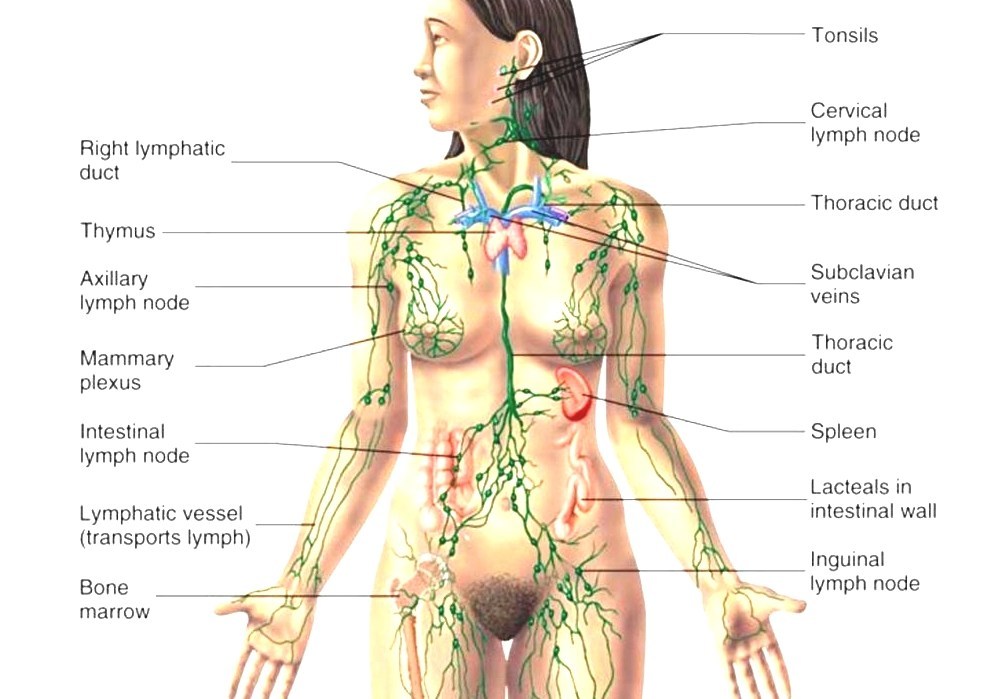 As a result, the initial lymphatic sac becomes the capsule of the mature lymph node, and the mesenchymal invagination becomes the hilus. The sac lumen also forms the sinuses inside the developing lymph node, while the mesenchymal tissue forms the lobules.[7] Lymph sacs are connected by channels to create a network of lymphatic vessels that join to form the early lymphatic system.
As a result, the initial lymphatic sac becomes the capsule of the mature lymph node, and the mesenchymal invagination becomes the hilus. The sac lumen also forms the sinuses inside the developing lymph node, while the mesenchymal tissue forms the lobules.[7] Lymph sacs are connected by channels to create a network of lymphatic vessels that join to form the early lymphatic system.
Blood Supply and Lymphatics
Lymph nodes are generally found in close association with blood vessels. The axillary lymph nodes receive their blood supply from the axillary artery, and venous drainage occurs via branches of the axillary vein. Interestingly, it has been shown that stage II breast cancer and above are associated with a significant increase in the number of blood vessels in axillary lymph nodes.[12]
Nerves
Lymph nodes do not contain their nervous supply; however, they are often near many different nerves. For example, the axillary lymph nodes are situated near the cords and branches of the brachial plexus, which innervate the muscles of the upper limb. Anatomically, the brachial plexus divisions become cords at the mid-clavicle, while the branches typically originate at the level of the pectoralis minor muscle.[13] The long thoracic nerve, which originates from C5-7 nerve roots, is also located within the axilla.[14] It is important to be aware of these structures as they are vulnerable to injury during axillary lymph node surgery.[15][16]
Anatomically, the brachial plexus divisions become cords at the mid-clavicle, while the branches typically originate at the level of the pectoralis minor muscle.[13] The long thoracic nerve, which originates from C5-7 nerve roots, is also located within the axilla.[14] It is important to be aware of these structures as they are vulnerable to injury during axillary lymph node surgery.[15][16]
Muscles
The axilla is a pyramidal shaped area with five anatomical borders, based mainly on the musculature in this region [1]:
Medial border: the serratus anterior muscle and the first four ribs.
Lateral border: coracobrachialis and the short head of the biceps muscle.
Anterior border: pectoralis major and pectoralis minor muscles
Posterior border: subscapularis, latissimus dorsi, and teres major muscles
Superior border: clavicle, scapula, and the first rib
Physiologic Variants
In total, there are between 20 to 30 axillary lymph nodes, though the exact number varies between individuals. The commonest arrangement of these lymphatic pathways is a single linear chain, then a chain branching into two linear chains, and, least common, is a network configuration.[17] Tracing these lymph nodes becomes still difficult due to the high variation in the quantity of subcutaneous adipose tissue.[18] There is also physiological variation in other axillary structures such as the medial cutaneous nerve of the arm and intercostobrachial nerves.[18] Surgeons need to be aware of these when operating on the axilla to avoid iatrogenic injury.
The commonest arrangement of these lymphatic pathways is a single linear chain, then a chain branching into two linear chains, and, least common, is a network configuration.[17] Tracing these lymph nodes becomes still difficult due to the high variation in the quantity of subcutaneous adipose tissue.[18] There is also physiological variation in other axillary structures such as the medial cutaneous nerve of the arm and intercostobrachial nerves.[18] Surgeons need to be aware of these when operating on the axilla to avoid iatrogenic injury.
Surgical Considerations
Patients with suspected breast cancer should have an examination for axillary lymphadenopathy. Those with enlarged lymph nodes may be considered for a sentinel lymph node biopsy (SLNB) and/or axillary lymph node dissection (ALND). The sentinel node is the first lymph node into which a primary tumor drains.[19] The identification of this node allows for prognostication.
If an ALND is performed, there are classically three surgical levels of removal:
Level I: lateral to the pectoralis minor muscle
Level II: posterior to the pectoralis minor muscle
Level III (infraclavicular): medial to the pectoralis minor muscle[20]
There are many possible complications of an ALND for carcinoma of the breast.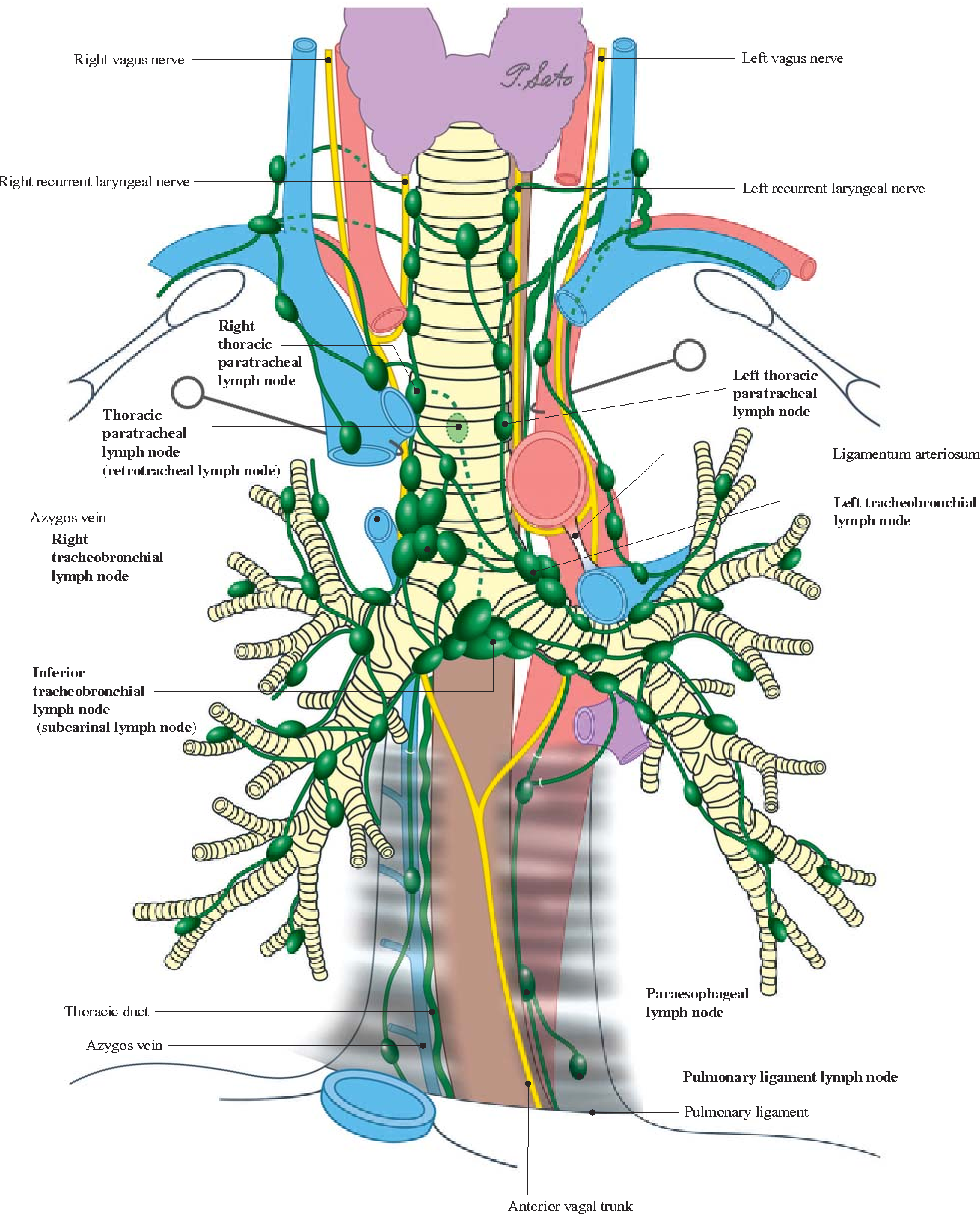 These usually affect the ipsilateral upper limb and may include numbness (39%), pain (39%), arm swelling (25%), and limitation of arm movement (16%).[21] Arm swelling due to interruption of the lymphatic drainage of the upper limb is also known as lymphedema. In this condition, lymph accumulates in the subcutaneous tissue leading to symptoms such as pain and altered sensation, limb heaviness, and difficulty fitting into clothing.[22] A winged scapula may also be observed postoperatively due to injury to the long thoracic nerve, especially in patients with a low body mass index.[16] This nerve innervates the serratus anterior, which acts to pull the scapula forward.
These usually affect the ipsilateral upper limb and may include numbness (39%), pain (39%), arm swelling (25%), and limitation of arm movement (16%).[21] Arm swelling due to interruption of the lymphatic drainage of the upper limb is also known as lymphedema. In this condition, lymph accumulates in the subcutaneous tissue leading to symptoms such as pain and altered sensation, limb heaviness, and difficulty fitting into clothing.[22] A winged scapula may also be observed postoperatively due to injury to the long thoracic nerve, especially in patients with a low body mass index.[16] This nerve innervates the serratus anterior, which acts to pull the scapula forward.
Despite these complications, ALNDs commonly occur unnecessarily in women without nodal involvement. Some authors, therefore, recommend that the clinician perform an SLNB first to confirm the nodal status of the patient.[23] Importantly, the data shows that there is no change in survival in early-stage breast cancer patients treated with SLNB compared to ALND. [24] SLNB may, therefore, spare many women of the morbidity associated with an axillary dissection.
[24] SLNB may, therefore, spare many women of the morbidity associated with an axillary dissection.
Clinical Significance
Lymph nodes can enlarge in response to numerous etiologies, including malignancy, infections, and autoimmune disease.[5] Cancer of the lymph nodes can subdivide into primary cancers such as lymphoma, as well as secondary cancers, classically of the breast. Management of these tumors may involve the surgical removal of lymph nodes and/or radiotherapy, both of which can damage the lymphatic drainage system.[25]
Infections can be thought of as local or systemic, or classified according to the causative organism. While a significant proportion of lymphadenopathy occurs as a result of bacterial and viral infections, it is important not to forget parasitic infections. Lymphatic filariasis is said to be one of the leading causes of disfigurement and the second most common reason behind permanent disability in the world.[26] In this condition, filarial worms infiltrate and damage the lymphatic system resulting in significant lymphedema (elephantiasis) of the arms, legs, breasts, or genitals.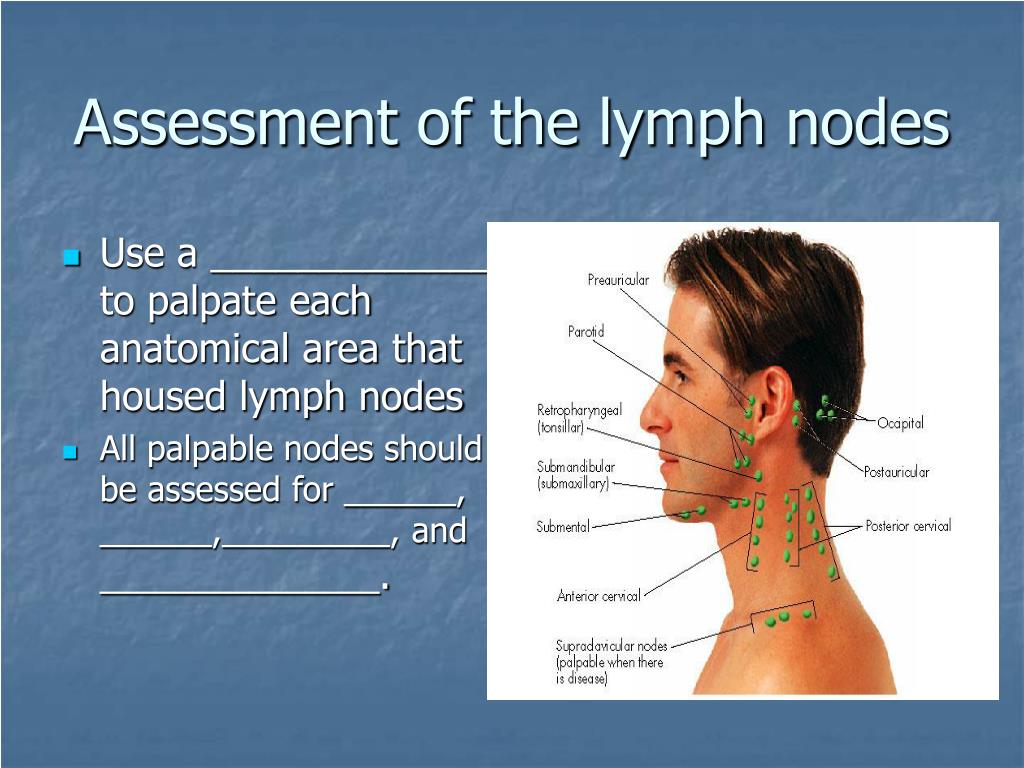 [27]
[27]
It has been noted that axillary lymphadenopathy is usually due to infectious conditions like sarcoidosis, cat scratch disease, Staphylococcal, and Streptococcal skin infections, or malignancies like breast cancer, leukemia, and lymphoma.[5]
In breast cancer cases, it is essential to note the number of lymph nodes involved, as the prognosis is worst (in case of relapse) if four or more axillary lymph nodes are involved. Thus axillary metastasis is not only a marker of diagnosis but also indicates its aggressive phenotype.[4] Three factors, being tumor size, young age, and poor histology, are significant predictors of axillary lymph node metastatic grading.[28]
The radiological examination of the axillary group of lymph nodes in the case of breast cancers is possible by the computed tomography (CT) scan and magnetic resonance imagining (MRI) that gives high-resolution images. The ultrasound is good to detect morphological abnormalities such as hilar infiltration, cortical thickening, peripheral vascularization, and destruction of the kidney-shaped appearance. [29] But the most specific results are obtained by ultrasound coupled with the fine-needle aspiration needle biopsy (FNAB).[30]
[29] But the most specific results are obtained by ultrasound coupled with the fine-needle aspiration needle biopsy (FNAB).[30]
Other Issues
Below is the staging of carcinoma of the breast, primarily based on the axillary lymph nodes’ involvement.
Stage O: No involvement of axillary lymph nodes. Few cancer cells are present in breast ductules or lobules.
Stage 1A: No involvement of axillary lymph nodes. Tumor size in the breast is less than 2 cm.
Stage 1B: Very few lymph nodes are involved, but their size is less than 2mm (micrometastases). The tumor might or might not be present in the breast. If present, it will be less than 2 cm in size.
Stage 2A: 1 to 3 axillary lymph nodes show cancer cells and are larger than 2mm with tumor size in breast less than 2cm. Or the size of the tumor in the breast is less than 5 cm without the involvement of lymph nodes.
Stage 2B: 1 to 3 axillary lymph nodes involved with a tumor less than 5 cm.
 Or the tumor is larger than 5 cm in size with no lymph node involvement.
Or the tumor is larger than 5 cm in size with no lymph node involvement.Stage 3A: 4 to 9 axillary lymph nodes are seen with a tumor less than 5 cm. Or 1 to 9 axillary lymph nodes are involved with the tumor being bigger than 5 cm.
Stage 3B: Involvement of up to 9 axillary lymph nodes with tumor involving surrounding muscles and skin of the breast.
Stage 3C: Here ten or more axillary lymph nodes are involved with also the involvement of the surrounding lymph nodes (like infraclavicular, internal mammary, or supraclavicular lymph nodes)
Stage 4: Involvement of almost all axillary lymph nodes with distant metastatic spread to organs like lungs, liver, bone, brain, etc.[31]
Review Questions
Access free multiple choice questions on this topic.
Comment on this article.
Figure
Lymph nodes of the arm, Deltoid pectoral glands, Axillary glands, Supratrochlear gland. Contributed by Gray’s anatomy Plates
Contributed by Gray’s anatomy Plates
Figure
Axillary lymph nodes, Deltoideo Pectoral glands, lateral group, Subclavicular group, Central group, Subscapular group, Pectoral group, Cutaneous collecting trunk fro the thoracic wall, Cutaneous collecting trunks, Subareolar plexus, Pectoral group, Mammary (more…)
References
- 1.
Gordon A, Alsayouri K. StatPearls [Internet]. StatPearls Publishing; Treasure Island (FL): Jul 25, 2022. Anatomy, Shoulder and Upper Limb, Axilla. [PubMed: 31613503]
- 2.
Null M, Arbor TC, Agarwal M. StatPearls [Internet]. StatPearls Publishing; Treasure Island (FL): Mar 6, 2023. Anatomy, Lymphatic System. [PubMed: 30020619]
- 3.
Khan YS, Sajjad H. StatPearls [Internet]. StatPearls Publishing; Treasure Island (FL): Jul 25, 2022. Anatomy, Thorax, Mammary Gland. [PubMed: 31613446]
- 4.
Jatoi I, Hilsenbeck SG, Clark GM, Osborne CK. Significance of axillary lymph node metastasis in primary breast cancer.
 J Clin Oncol. 1999 Aug;17(8):2334-40. [PubMed: 10561295]
J Clin Oncol. 1999 Aug;17(8):2334-40. [PubMed: 10561295]- 5.
Mohseni S, Shojaiefard A, Khorgami Z, Alinejad S, Ghorbani A, Ghafouri A. Peripheral lymphadenopathy: approach and diagnostic tools. Iran J Med Sci. 2014 Mar;39(2 Suppl):158-70. [PMC free article: PMC3993046] [PubMed: 24753638]
- 6.
Capobianco SM, Fahmy MW, Sicari V. StatPearls [Internet]. StatPearls Publishing; Treasure Island (FL): Jul 25, 2022. Anatomy, Thorax, Subclavian Veins. [PubMed: 30422480]
- 7.
Willard-Mack CL. Normal structure, function, and histology of lymph nodes. Toxicol Pathol. 2006;34(5):409-24. [PubMed: 17067937]
- 8.
Dialani V, James DF, Slanetz PJ. A practical approach to imaging the axilla. Insights Imaging. 2015 Apr;6(2):217-29. [PMC free article: PMC4376818] [PubMed: 25534139]
- 9.
Bautch VL, Caron KM. Blood and lymphatic vessel formation. Cold Spring Harb Perspect Biol. 2015 Mar 02;7(3):a008268. [PMC free article: PMC4355271] [PubMed: 25731762]
- 10.

Butler MG, Isogai S, Weinstein BM. Lymphatic development. Birth Defects Res C Embryo Today. 2009 Sep;87(3):222-31. [PMC free article: PMC2755610] [PubMed: 19750516]
- 11.
Ilahi M, St Lucia K, Ilahi TB. StatPearls [Internet]. StatPearls Publishing; Treasure Island (FL): Jul 25, 2022. Anatomy, Thorax, Thoracic Duct. [PubMed: 30020599]
- 12.
Maiborodin IV, Kozyakov AE, Babayants EV, Krasil’nikov SE. Features of Blood Supply to Axillary Lymph Nodes in Breast Cancer Patients. Bull Exp Biol Med. 2017 May;163(1):82-86. [PubMed: 28580489]
- 13.
Gasparotti R, Shah L. Brachial and Lumbosacral Plexus and Peripheral Nerves. In: Hodler J, Kubik-Huch RA, von Schulthess GK, editors. Diseases of the Brain, Head and Neck, Spine 2020–2023: Diagnostic Imaging [Internet]. Springer; Cham (CH): Feb 15, 2020. pp. 241–254. [PubMed: 32119244]
- 14.
Lung K, Lui F. StatPearls [Internet]. StatPearls Publishing; Treasure Island (FL): Jul 25, 2022.
 Anatomy, Thorax, Long Thoracic Nerve. [PubMed: 30571017]
Anatomy, Thorax, Long Thoracic Nerve. [PubMed: 30571017]- 15.
Lucci A, McCall LM, Beitsch PD, Whitworth PW, Reintgen DS, Blumencranz PW, Leitch AM, Saha S, Hunt KK, Giuliano AE., American College of Surgeons Oncology Group. Surgical complications associated with sentinel lymph node dissection (SLND) plus axillary lymph node dissection compared with SLND alone in the American College of Surgeons Oncology Group Trial Z0011. J Clin Oncol. 2007 Aug 20;25(24):3657-63. [PubMed: 17485711]
- 16.
Belmonte R, Monleon S, Bofill N, Alvarado ML, Espadaler J, Royo I. Long thoracic nerve injury in breast cancer patients treated with axillary lymph node dissection. Support Care Cancer. 2015 Jan;23(1):169-75. [PubMed: 25035064]
- 17.
Peters AM, Fowler JC, Britton TB, Solanki CK, Ballinger JR, Ravichandran D, Mortimer PS, Purushotham AD. Functional variation in lymph node arrangements within the axilla. Lymphat Res Biol. 2009;7(3):139-44. [PubMed: 19778201]
- 18.

Soares EW. Anatomical variations of the axilla. Springerplus. 2014;3:306. [PMC free article: PMC4093907] [PubMed: 25045608]
- 19.
Nieweg OE, Tanis PJ, Kroon BB. The definition of a sentinel node. Ann Surg Oncol. 2001 Jul;8(6):538-41. [PubMed: 11456054]
- 20.
Rinaldi RM, Sapra A, Bellin LS. StatPearls [Internet]. StatPearls Publishing; Treasure Island (FL): Aug 8, 2022. Breast Lymphatics. [PubMed: 31971733]
- 21.
Brar P, Jain S, Singh I. Complications of Axillary Lymph Node Dissection in Treatment of Early Breast Cancer: A Comparison of MRM and BCS. Indian J Surg Oncol. 2011 Jun;2(2):126-32. [PMC free article: PMC3244199] [PubMed: 22693405]
- 22.
Sleigh BC, Manna B. StatPearls [Internet]. StatPearls Publishing; Treasure Island (FL): Apr 19, 2023. Lymphedema. [PubMed: 30725924]
- 23.
Yen TWF, Laud PW, Pezzin LE, McGinley EL, Wozniak E, Sparapani R, Nattinger AB. Prevalence and Consequences of Axillary Lymph Node Dissection in the Era of Sentinel Lymph Node Biopsy for Breast Cancer.
 Med Care. 2018 Jan;56(1):78-84. [PMC free article: PMC5725235] [PubMed: 29087982]
Med Care. 2018 Jan;56(1):78-84. [PMC free article: PMC5725235] [PubMed: 29087982]- 24.
Giuliano AE, Ballman K, McCall L, Beitsch P, Whitworth PW, Blumencranz P, Leitch AM, Saha S, Morrow M, Hunt KK. Locoregional Recurrence After Sentinel Lymph Node Dissection With or Without Axillary Dissection in Patients With Sentinel Lymph Node Metastases: Long-term Follow-up From the American College of Surgeons Oncology Group (Alliance) ACOSOG Z0011 Randomized Trial. Ann Surg. 2016 Sep;264(3):413-20. [PMC free article: PMC5070540] [PubMed: 27513155]
- 25.
Warren LE, Miller CL, Horick N, Skolny MN, Jammallo LS, Sadek BT, Shenouda MN, O’Toole JA, MacDonald SM, Specht MC, Taghian AG. The impact of radiation therapy on the risk of lymphedema after treatment for breast cancer: a prospective cohort study. Int J Radiat Oncol Biol Phys. 2014 Mar 01;88(3):565-71. [PMC free article: PMC3928974] [PubMed: 24411624]
- 26.
Lourens GB, Ferrell DK. Lymphatic Filariasis.
 Nurs Clin North Am. 2019 Jun;54(2):181-192. [PubMed: 31027660]
Nurs Clin North Am. 2019 Jun;54(2):181-192. [PubMed: 31027660]- 27.
Shenoy RK. Clinical and pathological aspects of filarial lymphedema and its management. Korean J Parasitol. 2008 Sep;46(3):119-25. [PMC free article: PMC2553332] [PubMed: 18830049]
- 28.
Rivadeneira DE, Simmons RM, Christos PJ, Hanna K, Daly JM, Osborne MP. Predictive factors associated with axillary lymph node metastases in T1a and T1b breast carcinomas: analysis in more than 900 patients. J Am Coll Surg. 2000 Jul;191(1):1-6; discussion 6-8. [PubMed: 10898177]
- 29.
Maxwell F, de Margerie Mellon C, Bricout M, Cauderlier E, Chapelier M, Albiter M, Bourrier P, Espié M, de Kerviler E, de Bazelaire C. Diagnostic strategy for the assessment of axillary lymph node status in breast cancer. Diagn Interv Imaging. 2015 Oct;96(10):1089-101. [PubMed: 26372221]
- 30.
Lernevall A. Imaging of axillary lymph nodes. Acta Oncol. 2000;39(3):277-81. [PubMed: 10987221]
- 31.

Akram M, Iqbal M, Daniyal M, Khan AU. Awareness and current knowledge of breast cancer. Biol Res. 2017 Oct 02;50(1):33. [PMC free article: PMC5625777] [PubMed: 28969709]
Disclosure: Harry Kyriacou declares no relevant financial relationships with ineligible companies.
Disclosure: Yusuf Khan declares no relevant financial relationships with ineligible companies.
Pictures of Swollen Lymph Nodes
Medically Reviewed by Poonam Sachdev on February 22, 2022
Cavities, dental work, or a mouth injury can lead to an infection in your tooth. This can cause swelling in the lymph nodes under your jaw or in your neck.
One of the telltale signs you have an infection in your airways — nose, sinuses, throat — is big and painful lymph nodes in your neck.
Human immunodeficiency virus (HIV) is an infection that attacks your body’s immune system. You can get it when specific bodily fluids from someone with the virus come in contact with your bloodstream. Swollen lymph nodes in your groin area, head, or neck can be an early symptom.
Swollen lymph nodes in your groin area, head, or neck can be an early symptom.
Lymphoma is a type of cancer that starts in your lymph nodes and causes swelling. Other types of cancer can spread to lymph nodes when cells break off of a tumor and travel in the lymph system to other parts of your body. Lymph nodes with cancer cells in them may or may not swell. The lymph nodes closest to a tumor are usually the ones that get bigger.
Lupus is an ongoing autoimmune disease that causes inflammation in your joints, skin, and kidneys. It also affects your blood cells, heart, and lungs. Swollen lymph nodes aren’t usually a symptom, but they may get bigger during a lupus flare.
Genital herpes, syphilis, and gonorrhea can lead to swollen lymph nodes. Usually, you’ll find them in the groin area if you have genital herpes or syphilis. Gonorrhea can cause swollen glands in your neck and groin.
Scalp ringworm, an infection caused by a fungus, can make the glands in your neck swell. Impetigo — another skin infection that usually affects your face — can also show up on the scalp and cause the lymph nodes in your neck to get bigger.
Impetigo — another skin infection that usually affects your face — can also show up on the scalp and cause the lymph nodes in your neck to get bigger.
Viral conjunctivitis, also known as pinkeye, is a highly contagious infection caused by a virus. It can be triggered by the same virus that gives you a cold. Pinkeye and colds sometimes happen together. It can also lead to swollen lymph nodes.
Scrofula, a type of tuberculosis, or TB, is an infection in your neck lymph nodes. It makes them swell and feel rubbery or firm. It’s typically not painful, but it might come with fever, chills, and a general unwell feeling.
Swollen lymph nodes can be a side effect of the medication phenytoin. People most often take this drug for epilepsy, a seizure disorder.
You can get a bacterial infection called cat-scratch disease if one scratches you, bites you, or licks an open wound on your skin. It takes about 2 weeks for symptoms to show up. You’ll be red and swollen at the area. You might also have a fever, headache, and fatigue. The lymph nodes closest to the area may also swell.
You might also have a fever, headache, and fatigue. The lymph nodes closest to the area may also swell.
You get shingles (herpes zoster) from the same virus that causes chickenpox. It sticks around in your body and can show up as shingles when you’re an adult. The main symptom is a rash that causes nerve pain, but you may also have swollen lymph nodes.
IMAGES PROVIDED BY:
- Getty
- Getty
- Getty
- Getty
- Science Source
- Science Source
- Science Source
- Getty
- Medical Images
- Getty
- Getty
- Getty
SOURCES:
Mayo Clinic: “Tooth abscess,” “Swollen lymph nodes,” “Gonorrhea,” “Phenytoin (Oral Route).”
Harvard Health: “The respiratory tract and its infections.”
CDC: “About HIV/AIDS,” “Cat-Scratch Disease.”
Medscape: “Early Symptomatic HIV Infection.”
American Cancer Society: “Lymph Nodes and Cancer.”
Journal of Clinical Medicine Research: “Generalized Lymphadenopathy as Presenting Feature of Systemic Lupus Erythematosus: Case Report and Review of the Literature.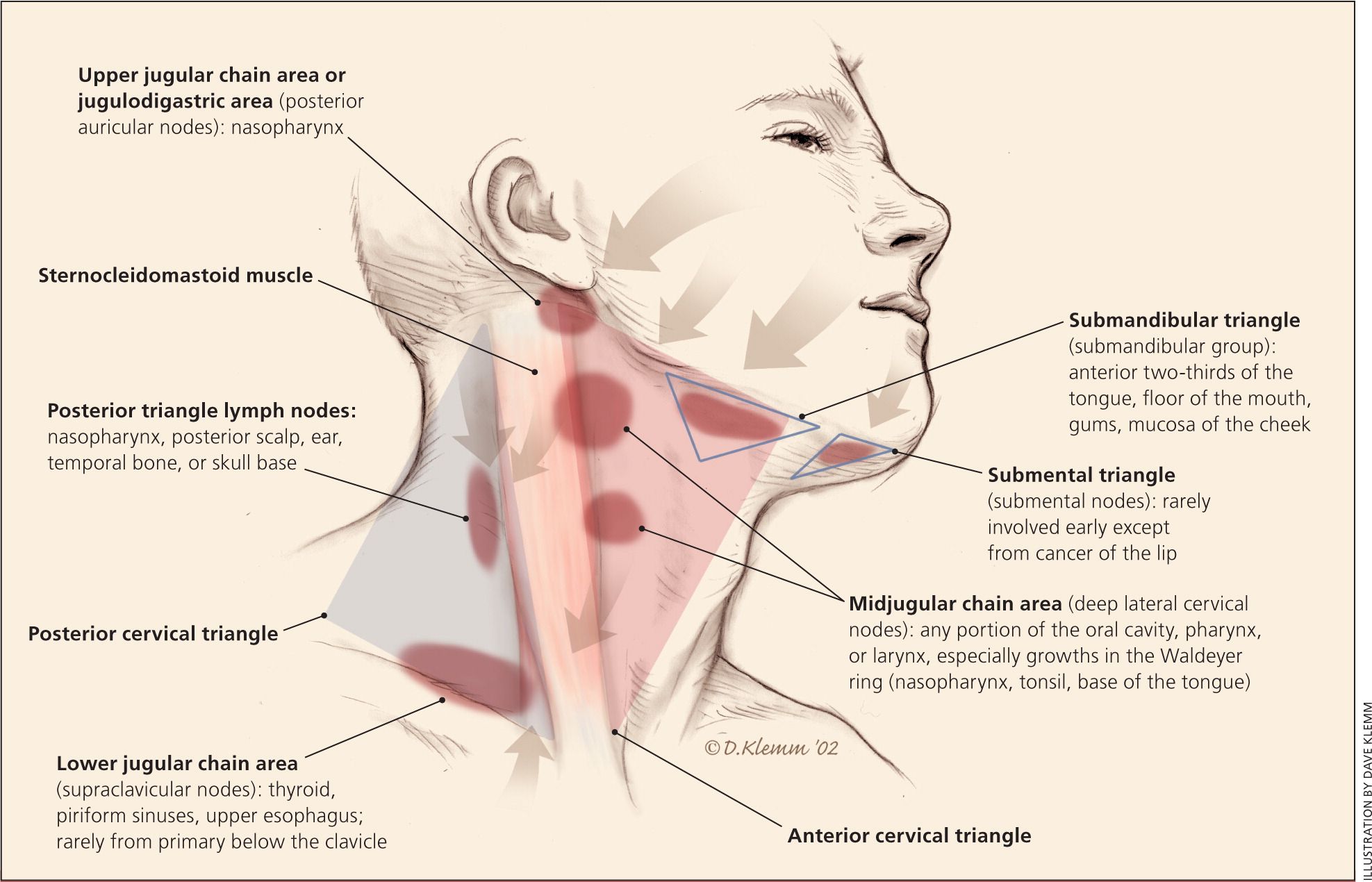 ”
”
Girlshealth.gov: “Types of STDs (STIs).”
New York State Department of Health: “Gonorrhea,” “Bacterial Skin Infections: Impetigo and MRSA.”
American Academy of Family Physicians: “Syphilis.”
Johns Hopkins Medicine: “Tinea Infections (Ringworm).”
UpToDate: “Patient education: Conjunctivitis (pink eye).”
Medscape: “Scrofula Overview of Scrofula.”
Washington University School of Medicine in St. Louis: “Relief from Shingle Pain.”
© 2022 WebMD, LLC. All rights reserved. View privacy policy and trust info
Lymph nodes | MyPathologyReport.ca
Dictionary of Pathology
What is a lymph node?
Lymph nodes are small organs located in various places throughout the body. They are connected to the body and to each other by small channels called lymphatics, which contain fluid. Lymph nodes are part of the immune system and their main function is to “sample” the fluids circulating in the body for changes such as infection, injury, or cancer. The average person has hundreds or even thousands of lymph nodes, although most people will never see or feel any of them until they become enlarged.
The average person has hundreds or even thousands of lymph nodes, although most people will never see or feel any of them until they become enlarged.
Why is lymph node examination important in a cancer report?
Cancer cells can spread from the tumor to the lymph nodes through small vessels called lymph nodes. For this reason, lymph nodes are usually removed and examined under a microscope for cancer cells. The movement of cancer cells from a tumor to another part of the body, such as a lymph node, is called metastasis.
Cancer cells usually first spread to lymph nodes close to the tumor, although lymph nodes far from the tumor can also be affected. For this reason, the first lymph nodes to be removed are usually close to the tumor. Lymph nodes further away from the tumor are usually removed only if they are enlarged and there is strong clinical suspicion that the lymph node may contain cancer cells.
If any lymph nodes have been removed from your body, a pathologist will examine them under a microscope and the results of this examination will be described in your report. Most reports will include the total number of lymph nodes examined where lymph nodes were found in the body, as well as the number (if any) containing cancer cells. If cancer cells were found in a lymph node, the size of the largest group of cancer cells (often described as a “foci” or “deposit”) will also be included.
Most reports will include the total number of lymph nodes examined where lymph nodes were found in the body, as well as the number (if any) containing cancer cells. If cancer cells were found in a lymph node, the size of the largest group of cancer cells (often described as a “foci” or “deposit”) will also be included.
Examination of the lymph nodes is important for two reasons. First, this information is used to determine the stage of the pathological node (pN). Second, finding cancer cells in a lymph node increases the risk that cancer cells will be found in other parts of the body in the future. As a result, your doctor will use this information when deciding whether additional treatment is needed, such as chemotherapy, radiation therapy, or immunotherapy.
What does it mean if a lymph node is described as positive?
Pathologists often use the term “positive” to describe a lymph node containing cancer cells. For example, a lymph node containing cancer cells may be called “positive for malignancy” or “positive for metastatic carcinoma”.
What does it mean if a lymph node is described as negative?
Pathologists often use the term “negative” to describe a lymph node that does not contain cancer cells. For example, a lymph node that does not contain cancer cells may be called “negative for malignancy” or “negative for metastatic carcinoma”.
Ultrasound of soft tissues and lymph nodes in the Primorsky district of St. Petersburg
Ultrasound of soft tissues and lymph nodes for a child is the most effective, objective and safe research method. Previously, pathologies in soft tissues or lymph nodes could be detected only with the help of palpation, after examination and questioning of the patient.
Ultrasonic research methods have been used for about 30 years, and they have proven themselves very well during this time. Early diagnosis of many diseases or developmental pathologies allows more effective treatment to be prescribed more quickly, until the situation is aggravated by complications.
Preparation for ultrasound of soft tissues and lymph nodes in a child
There is no need to prepare a child for this type of examination. The clinic specialist will tell you how to prepare. For older children, only a conversation is held about the importance of the procedure for health, its safety and painlessness. The doctor will apply the gel, and with the help of a sensor will drive over the skin, examining the desired area.
Ultrasound of soft tissues and lymph nodes is carried out without punctures, invasive intervention, the procedure does not even cause discomfort. In some cases, especially when the child is very small, you will need the help of parents to access the sensor in hard-to-reach places. Ultrasound is performed at any age.
Clinic “Osnova Deti” and ultrasound for children
Clinic “Osnova Deti” performs all types of ultrasound examinations for children using modern equipment. We employ both highly qualified pediatricians and narrow-profile specialists in childhood diseases – nephrologists, gastroenterologists, orthopedists, surgeons. You will be able to undergo an ultrasound scan of the child’s soft tissues and lymph nodes at any convenient day and time. Specialists will make the correct diagnosis, prescribe effective treatment and monitor its progress.
You will be able to undergo an ultrasound scan of the child’s soft tissues and lymph nodes at any convenient day and time. Specialists will make the correct diagnosis, prescribe effective treatment and monitor its progress.
Ultrasound of soft tissues for children
Examination is prescribed to examine muscles, fatty tissue, lymph nodes. The structure of the soft tissue, its condition, the presence of pathologies and neoplasms are determined.
Ultrasound of the lymph nodes for a child
Lymph nodes is a whole system that functions inside the body and protects it from viruses, bacteria, toxins, cleanses the blood. The nodes are responsible for the functioning of the immune system. With various failures, the lymph nodes change shape or size, thicken, and painful sensations appear.
Lymph nodes are located in different parts of the human body, therefore they are distinguished into cervical, submandibular, axillary, inguinal, abdominal.
Indications for ultrasound of soft tissues and lymph nodes for a child
- suspicion of tumors, cysts and other neoplasms;
- internal abscess;
- inflammation;
- lymph nodes enlarged;
- hard lymph nodes;
- soreness of the lymph nodes;
- sprained ligaments;
- diagnosis of surgical scars that do not heal for a long time or have changed their shape.



 Or the tumor is larger than 5 cm in size with no lymph node involvement.
Or the tumor is larger than 5 cm in size with no lymph node involvement. J Clin Oncol. 1999 Aug;17(8):2334-40. [PubMed: 10561295]
J Clin Oncol. 1999 Aug;17(8):2334-40. [PubMed: 10561295]
 Anatomy, Thorax, Long Thoracic Nerve. [PubMed: 30571017]
Anatomy, Thorax, Long Thoracic Nerve. [PubMed: 30571017]
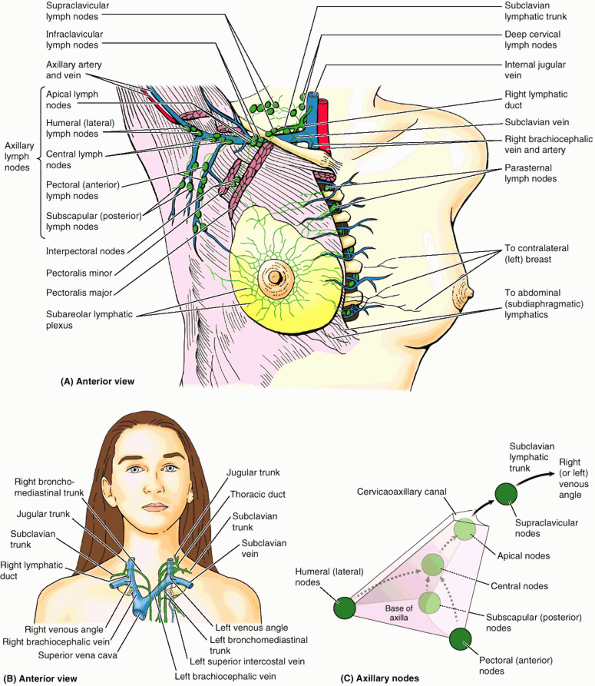 Med Care. 2018 Jan;56(1):78-84. [PMC free article: PMC5725235] [PubMed: 29087982]
Med Care. 2018 Jan;56(1):78-84. [PMC free article: PMC5725235] [PubMed: 29087982] Nurs Clin North Am. 2019 Jun;54(2):181-192. [PubMed: 31027660]
Nurs Clin North Am. 2019 Jun;54(2):181-192. [PubMed: 31027660]
